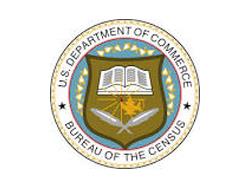Personal Income Rose 1% in January, Spending Up 0.2%
Washington, DC, February 29, 2024-Personal income increased $233.7 billion (1.0% at a monthly rate) in January, according to estimates released by the Bureau of Economic Analysis. Disposable personal income (DPI), personal income less personal current taxes, increased $67.6 billion (0.3%), and personal consumption expenditures (PCE) increased $43.9 billion (0.2%).
The PCE price index increased 0.3%. Excluding food and energy, the PCE price index increased 0.4%. Real DPI decreased less than 0.1% in January, and real PCE decreased 0.1%; goods decreased 1.1%, and services increased 0.4%.
"By one measure inflation is closing in on the Federal Reserve’s 2% target,” according to the Wall Street Journal. “By another it is still far away. Whether, and how, that gap closes could be critical to Fed plans this year.
“The Labor Department’s monthly report on consumer prices, known as the consumer-price index or CPI, is generally thought of as ‘the’ inflation report. It generates headlines, features in politicians’ speeches and moves markets-including earlier this month when a hotter-than-expected report sent the Dow Jones Industrial Average tumbling over 500 points.
“But the Labor Department’s figures aren’t the Fed’s focus. Instead, the central bank bases its 2% inflation target on the inflation data that comes out with the Commerce Department’s monthly report on income and spending. That is known as the personal-consumption expenditures price index, or PCE.
“PCE prices run cooler than the CPI, and lately the gap between the two has been especially large. Thursday, the Commerce Department reported that overall consumer prices rose 0.3% in January from December, putting them up 2.4% from a year earlier. In contrast, the January CPI was up 3.1% from a year earlier.
“PCE prices excluding food and energy items-the “core” figure that policymakers and economists watch in an effort to better understand inflation’s underlying trend-rose 2.8% in January from a year earlier. That compares with a 3.9% increase in core CPI. While core PCE almost always runs cooler than the core CPI, the difference between the two has rarely been so wide. In the 60 years before the pandemic, their median gap was just 0.4 percentage point.”
